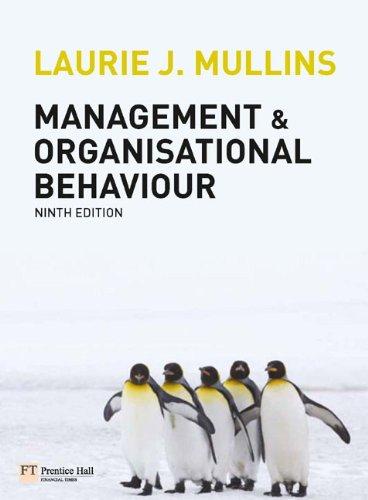Twitter, the microblogging service, which limits posts to 140 characters, has become a favourite of celebrities and
Question:
Twitter, the microblogging service, which limits posts to 140 characters, has become a favourite of celebrities and digerati. Businesses worried about being left behind are experimenting with using the service to promote themselves. Done badly, the effect can be like watching your grandfather dance at a wedding disco. So should it be left to a company’s marketing department to tweet?
The advice
Don Tapscott – the management guru Twitter is a godsend for marketing departments. They should embrace it. At its most basic, tweets are a useful way to send information on your product or service, or to respond to critics. Your brand can be seen to be cool by showing you have a large following. By attracting followers, your company can reach a wide audience. But it’s not just the size of the audience that matters; those who use Twitter are likely to hold sway over others. Keep track of what companies are saying about your brands. Profit from lessons learned. Employees who attract many followers become brands themselves; make the special effort to retain them.
Bernhard Warner – the consultant The company’s marketing department should tweet only if it can live up to these ten commandments:
1. We can articulate the company vision in no more than 140 characters.
2. We give credit to cool, innovative or thoughtprovoking ideas, even if coined by someone else.
3. We will challenge a potentially destructive position even if our position generates criticism.
4. We are willing to listen to and engage with others, even if ‘others’ are employees, customers or activists.
5. We will not get carried away, never tweeting about a fresh ‘cuppa’ or, worse, some banal corporate achievement.
6. We will dedicate time each week to reading what others have to say.
7. We will never include in a press release, speech or annual report our ‘Twitter followers’ figure, no matter how tempting.
8. We actually have something meaningful to say.
9. If we don’t have something to say, we’ll find the person in the organisation best suited for speaking/tweeting on behalf of the company.
10. If we cannot live up to these commandments we will reflect on whether corporate marketing is the right role for us.
Olivier Toubia – the academic
Twitter is a unique social network that offers several potential applications for a company’s marketing strategy. Unlike other social networking sites such as Facebook, Twitter is what is called a ‘directed’ social network: person A following person B does not necessarily imply that person B is following person A. (In contrast, you cannot be friends with someone on Facebook unless they are also friends with you.) This feature makes Twitter a better tool for identifying opinion leaders within your target market. Look for users who have many followers, but are not necessarily following many users back. One you have identified these key Twitters, engage in a two-way dialogue with them. Twitter allows you to disseminate information to your target market, offering them content and shaping your brand image. But it can also be an ear to the ground: follow your (potential) customers and ‘listen’ to their Tweets. Text-mining techniques enable you to learn a great deal from Tweets: not only what customers are talking about, but how they are talking about it. This information may be used to develop products, services and advertising messages that better resonate with your customers.
Discussion questions
1. How far does the article support the concept of a ‘network society’ as proposed by Castells? Examine the Twitter phenomenon using his framework as the basis for your analysis.
2. What does this tell us about the risks and opportunities presented to organisations by the speed of technological development?
Step by Step Answer:

Management And Organisational Behaviour
ISBN: 9780273728610
9th Edition
Authors: Laurie J. Mullins, Gill Christy





